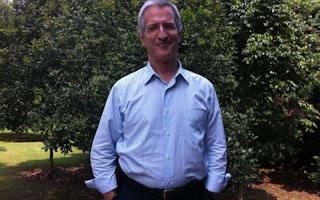In this interview by Singapore’s Energy Market Authority, Conservation International’s Michael Totten shares his ideas on how the world’s utilities can overcome the embedded incentive to sell more electricity and effectively promote energy efficiency instead.
Promoting energy efficiency is one pillar of a sustainable energy policy, as it is a cost-effective tool to reduce energy consumption and carbon emissions. Singapore-based Senior Advisor at Conservation International, Michael Totten, believes utilities providers can play a part in this process.
Totten founded the Center for Renewable Energy and Sustainable Technology, which remains one of the world’s largest Internet sites on sustainable development. Prior to that, he was involved in drafting a 250-page Global Warming Prevention Act, co-sponsored by one-third of the US House of Representatives.
He visited the Energy Market Authority in May and delivered a statistics-rich presentation to staff, where he shared his thoughts on how innovative regulation of the utilities sector can achieve gains in energy efficiency. For instance, providers can be urged to use more efficient power generation systems and encourage customers to use more energy-efficient appliances.
Totten noted that, in general, governments could provide incentives, information and standards to boost the uptake of energy efficiency measures. Using the example of the state of California in the US, Totten pointed out that initiatives to “incentivise” utilities providers to deliver service to customers at the least cost and least risk had been underway for a number of years.
Traditionally, the earnings of utilities providers expand along with increased utilities usage, resulting in a perverse disincentive for them to support energy efficiency. State regulators in California rewarded utilities providers for leading the way in efficiency measures, for instance, analysing residential homes and then installing energy-efficient appliances for them. Simultaneously, they allowed utilities providers to institute higher rates to recoup lost revenue as a result of customers requiring less gas, water or electricity.
Totten noted that in the past few decades, California’s climate emissions have been half the national average even in times of economic growth, with customers saving around US$1,000 per household on utilities each year. This utilities innovation opportunity, as he put it, captured five times more efficiency opportunities than if customers were left to pursue energy efficiency initiatives on their own.
He acknowledged that there was “an inherent perverse disincentive for utility suppliers to support energy efficiency, since their earnings expand along with increased utilities usage”. Hence, there is a need for suppliers to receive incentives so they could, for instance “take the lead and help an industrial customer retrofit their building to be more energy-efficient, in locations where the customer lacks expertise to do so or faces competing demands for its capital”.
As the utilities provider had access to long-term, relatively low-cost capital (compared with individual customers) and technical expertise, it could invest in helping end-users be more efficient instead of expanding utilities supply, which would be costly, risky and less green.
Turning to Asia, he said the benefits of utilities regulatory innovation were significant. Referring to a forecast by the Asian Development Bank (ADB), he noted that by 2050, Asia would account for 55 percent of global output as its urban population doubles. Hence, it would be crucial for energy-efficient devices and solutions to become the norm for urban buildings and infrastructure.
One example Totten gave was how using a white roof instead of a black roof would reduce heat transfer to the building and require less cooling, offsetting roughly 10 tonnes of carbon for a 10sqm area.
Simultaneously, he noted that utilities providers could explore new sources of power supply, from renewable energy test-beds to diverse clean energy technologies such as hydropower and biomass. Initiatives like these would help countries guard against man-made or natural disruptions to utilities supplies while reducing carbon emissions and improving air quality. These would be at no extra cost to taxpayers.
Michael Totten is a Singapore-based senior advisor for global non-governmental organization Conservation International. His work focuses on solutions to creating healthy and sustainable economies. He has worked on energy efficiency market transformation initiatives in developing countries at the International Institute for Energy Conservation. He was also involved in drafting a 250-page Global Warming Prevention Act, which was co-sponsored by one-third of the US House of Representatives.
This article was originally published on the Singapore International Energy Week 2012 website, and has been republished with permission.










